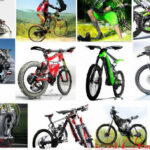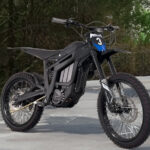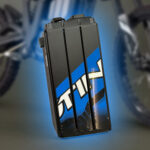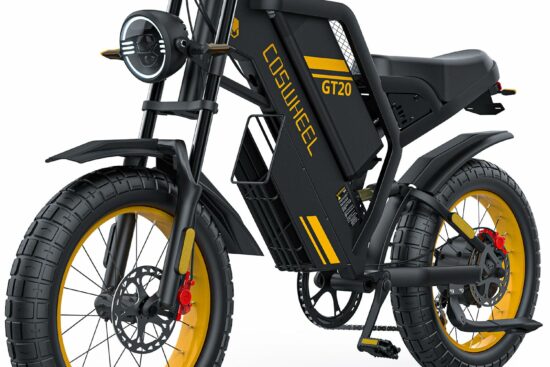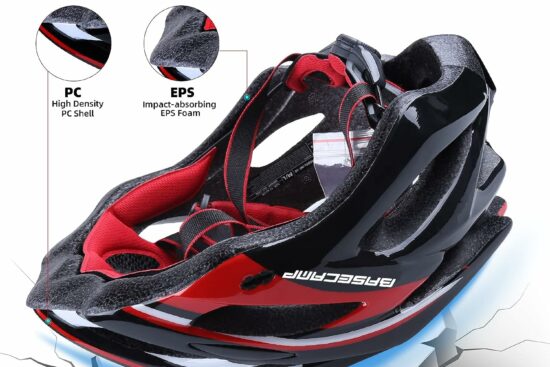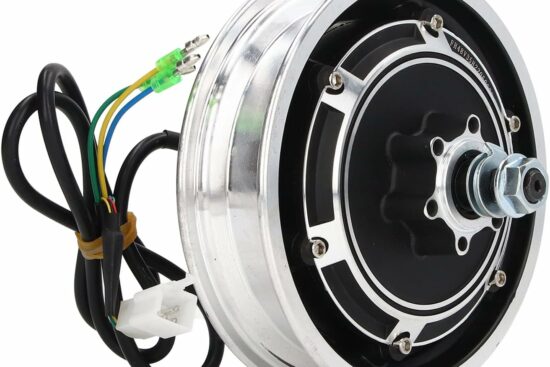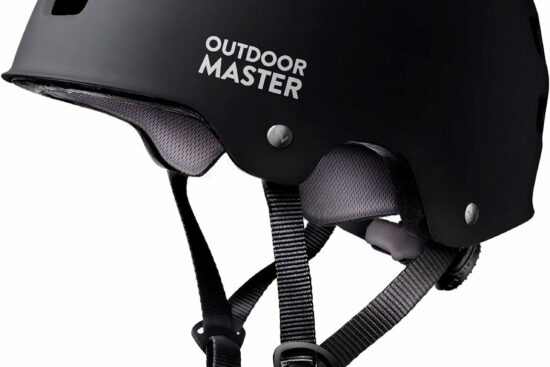
Electric dirt bikes and regular electric bikes may both run on electricity, but that is where their similarities end. These two types of vehicles cater to different needs and offer distinct features that set them apart. In this article, you will explore the differences between electric dirt bikes and regular electric bikes, gaining insight into their unique characteristics and understanding which one may suit your preferences and requirements. So, whether you are an adrenaline junkie seeking off-road adventures or a city dweller in need of a practical and eco-friendly commuting option, read on to discover the contrasting qualities of these electrifying rideables.
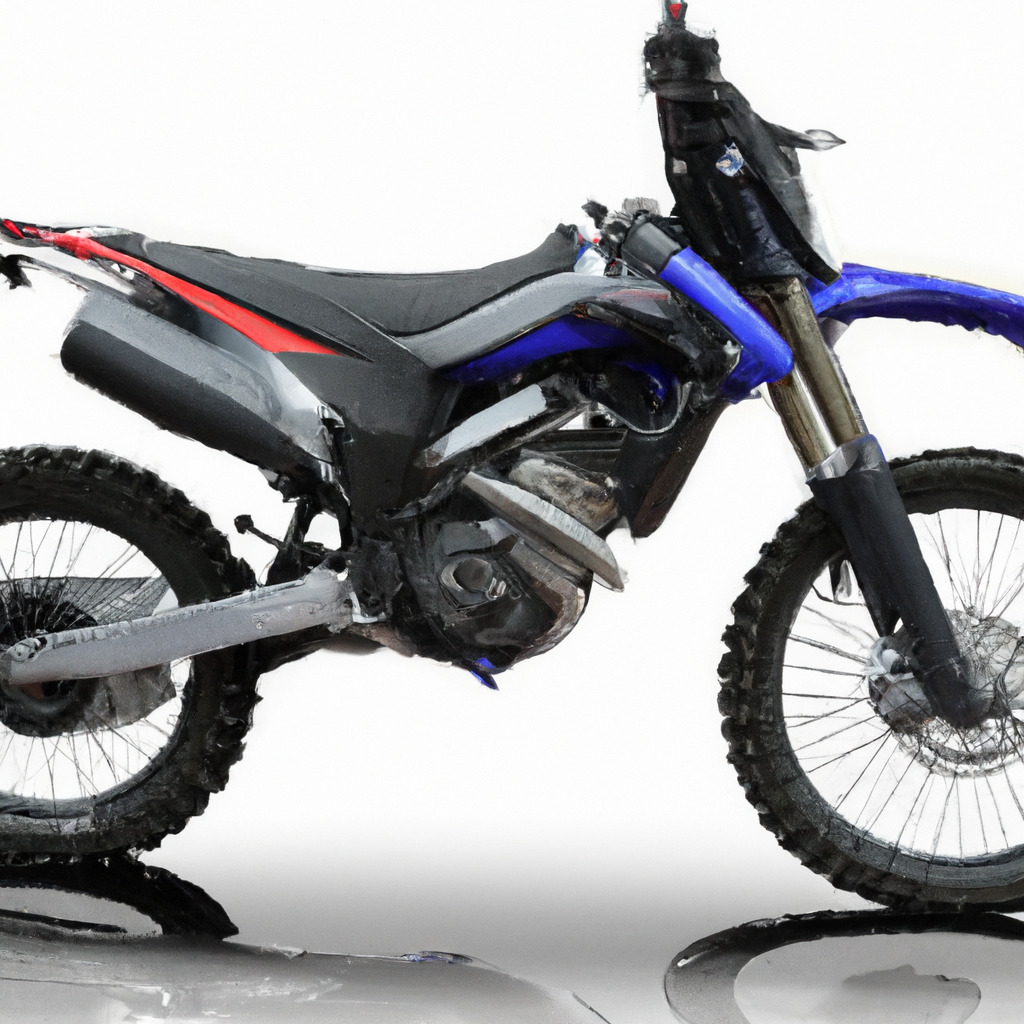
Overview of Electric Bikes
Electric bikes, also known as e-bikes, are bicycles that are equipped with an electric motor to provide assistance with propulsion. They are gaining popularity due to their ability to enhance the riding experience and make commuting easier and more enjoyable. By combining the benefits of traditional bicycles with the power of electric motors, e-bikes offer a convenient and eco-friendly transportation alternative.
Definition of Electric Bikes
Electric bikes are bicycles that are powered by an electric motor and typically have a rechargeable battery. They come in various designs, with some models having the motor integrated into the frame while others have a separate motor unit. The electric motor provides assistance to the rider, allowing them to pedal with less effort and reach higher speeds. E-bikes often have different power modes, allowing riders to choose the level of assistance they desire.
Components of Electric Bikes
Electric bikes consist of several key components that work together to provide a smooth and efficient riding experience. The major components include the electric motor, battery, controller, drivetrain, and display. The electric motor is responsible for providing the necessary power to assist with pedaling. The battery supplies energy to the motor and can usually be removed for recharging. The controller regulates the power output of the motor, while the drivetrain transfers the power from the motor to the wheels. The display shows important information such as speed, battery level, and power mode.
Advantages of Electric Bikes
Electric bikes offer numerous advantages over traditional bicycles and even other forms of transportation. One key advantage is the assistance provided by the electric motor, which allows riders to pedal with less effort and tackle steep inclines more easily. E-bikes also offer increased speed and acceleration compared to regular bikes, making them a great choice for commuting and covering longer distances. They are eco-friendly, as they produce zero emissions and reduce reliance on fossil fuels. Additionally, e-bikes can improve fitness levels and contribute to a healthier lifestyle.
Types of Electric Bikes
There are several types of electric bikes available, each designed to cater to different riding preferences and needs. Some common types include city e-bikes, mountain e-bikes, folding e-bikes, and cargo e-bikes. City e-bikes are designed for urban commuting and typically have a more upright riding position for comfort. Mountain e-bikes are equipped with features suitable for off-road trails and rugged terrains. Folding e-bikes are compact and easily foldable, allowing for convenient storage and transportation. Cargo e-bikes are designed to carry heavy loads and are often used for deliveries or hauling goods.
Overview of Electric Dirt Bikes
Electric dirt bikes, also known as electric motocross bikes, are typically used for off-road riding and offer a thrilling experience. These bikes combine the power of an electric motor with the ruggedness of a dirt bike, enabling riders to tackle challenging terrains and perform tricks and jumps. Electric dirt bikes are a popular choice for adrenaline seekers who enjoy the thrill of off-road riding while also prioritizing environmental sustainability.
Definition of Electric Dirt Bikes
Electric dirt bikes are off-road motorcycles powered by an electric motor and battery. They are designed to handle dirt tracks, trails, and rough terrains, providing riders with an exhilarating riding experience. Electric dirt bikes offer the same excitement and performance as traditional petrol-powered models, but with the added benefit of emission-free riding. They are suitable for riders of all skill levels, from beginners to experienced riders.
Components of Electric Dirt Bikes
Electric dirt bikes share many components with their traditional counterparts, but with some key differences due to the electric powertrain. They feature an electric motor, battery, controller, drivetrain, and suspension system, among others. The electric motor provides the required power to propel the bike forward, while the battery supplies energy to the motor. The controller regulates the power output, ensuring smooth acceleration and control. The drivetrain transfers power from the motor to the wheels, while the suspension system absorbs shocks and vibrations from rough terrains.
Advantages of Electric Dirt Bikes
Electric dirt bikes offer several advantages over traditional petrol-powered dirt bikes. One major advantage is the reduced noise pollution, as electric motors operate silently compared to the loud exhausts of petrol-powered bikes. This allows riders to enjoy off-road adventures without disturbing nature or nearby communities. Another advantage is the instant torque delivery of electric motors, providing quick acceleration and enhanced control. Electric dirt bikes also eliminate the need for fuel, reducing operating costs and environmental impact.
Types of Electric Dirt Bikes
Like traditional dirt bikes, electric dirt bikes come in different types to suit various riding styles and preferences. There are motocross electric dirt bikes designed for racing on closed tracks, trail electric dirt bikes suitable for off-road adventures, and dual-sport electric dirt bikes that can be ridden both on and off-road. Each type offers unique features and capabilities to cater to different riding needs, ensuring there is an electric dirt bike suitable for every rider.
Design Differences
The design of electric bikes differs from electric dirt bikes, mainly due to the intended use and terrain. While both types of bikes share similarities in terms of the electric powertrain, there are notable differences in frame and suspension, tires, seat design, weight distribution, and handlebar design.
Frame and Suspension
Electric bikes intended for urban commuting typically have a lightweight frame made of materials such as aluminum or carbon fiber. These frames prioritize comfort and efficiency, with a more upright riding position. In contrast, electric dirt bikes have a sturdier frame constructed to withstand the rigors of off-road riding. They feature reinforced frames, additional bracing, and extended suspension travel for enhanced durability and shock absorption.
Tires
Electric bikes designed for city riding usually have smoother tires to provide better grip on paved surfaces, ensuring a comfortable and efficient ride. On the other hand, electric dirt bikes feature knobby tires with aggressive tread patterns to provide maximum traction on loose dirt, mud, and rocky terrains. The tires are wider and more robust to handle the demands of off-road riding, providing stability and control in challenging conditions.
Seat Design
Electric bikes for urban commuting generally have wider, more cushioned seats to provide comfort during longer rides. The seat position is typically more relaxed, with an emphasis on ergonomics. Electric dirt bikes, however, often have narrower seats with firmer padding to allow for easier movement and control during off-road maneuvers. Additionally, the seat positioning is more aggressive, accommodating the standing position that is often used during intense off-road riding.
Weight Distribution
Electric bikes prioritize weight distribution towards the rear to provide a stable and balanced ride on paved surfaces. The battery and motor are typically positioned towards the rear of the bike, ensuring a lower center of gravity and improved maneuverability. In contrast, electric dirt bikes have weight distribution biased towards the front to increase traction and control during off-road riding. This gives the rider more stability and allows for better handling on challenging terrains.
Handlebar Design
Electric bikes for urban commuting often have handlebars that are positioned higher and wider to promote a more upright riding position, providing comfort and better visibility in traffic. Electric dirt bikes, on the other hand, have handlebars positioned lower and narrower to allow for better control while standing and maneuvering on off-road trails. The handlebars are designed to offer maximum control and responsiveness during aggressive and dynamic riding.
Power and Performance
The power and performance of electric bikes and electric dirt bikes differ to cater to their respective riding purposes and environments. Key factors that distinguish their power and performance include motor power and torque, speed and acceleration, battery capacity, and range and charging time.
Motor Power and Torque
Electric bikes designed for urban commuting usually have lower motor power and torque compared to electric dirt bikes. The motors of urban electric bikes are typically geared towards assisting with pedaling rather than providing high speeds or off-road capabilities. Electric dirt bikes, on the other hand, have powerful motors with high torque to tackle demanding off-road terrains and enable impressive acceleration.
Speed and Acceleration
Electric bikes for city commuting generally have a lower top speed and slower acceleration compared to electric dirt bikes. The speed of urban electric bikes is usually limited to ensure safety and comply with local regulations. Electric dirt bikes, designed for off-road adventures, have higher top speeds and quicker acceleration, allowing riders to conquer difficult trails and make jumps with ease.
Battery Capacity
Urban electric bikes typically have smaller battery capacities compared to electric dirt bikes. This is due to the shorter commuting distances and the lower power requirements of urban cycling. The smaller battery size makes urban electric bikes lighter and more maneuverable. Electric dirt bikes, on the other hand, have larger battery capacities to support the higher power demands of off-road riding, ensuring longer ride times and extended range.
Range and Charging Time
The range of electric bikes and electric dirt bikes is determined by the capacity of their batteries and the riding conditions. Urban electric bikes typically have a range of 30-60 miles on a single charge, depending on factors such as terrain, rider weight, and power mode. Charging time for urban electric bikes is usually around 3-6 hours, allowing for convenient overnight charging. Electric dirt bikes, designed for more demanding and longer rides, have a range of approximately 20-50 miles on a single charge. Charging time can vary but generally falls within the 2-6 hour range, depending on the battery capacity.
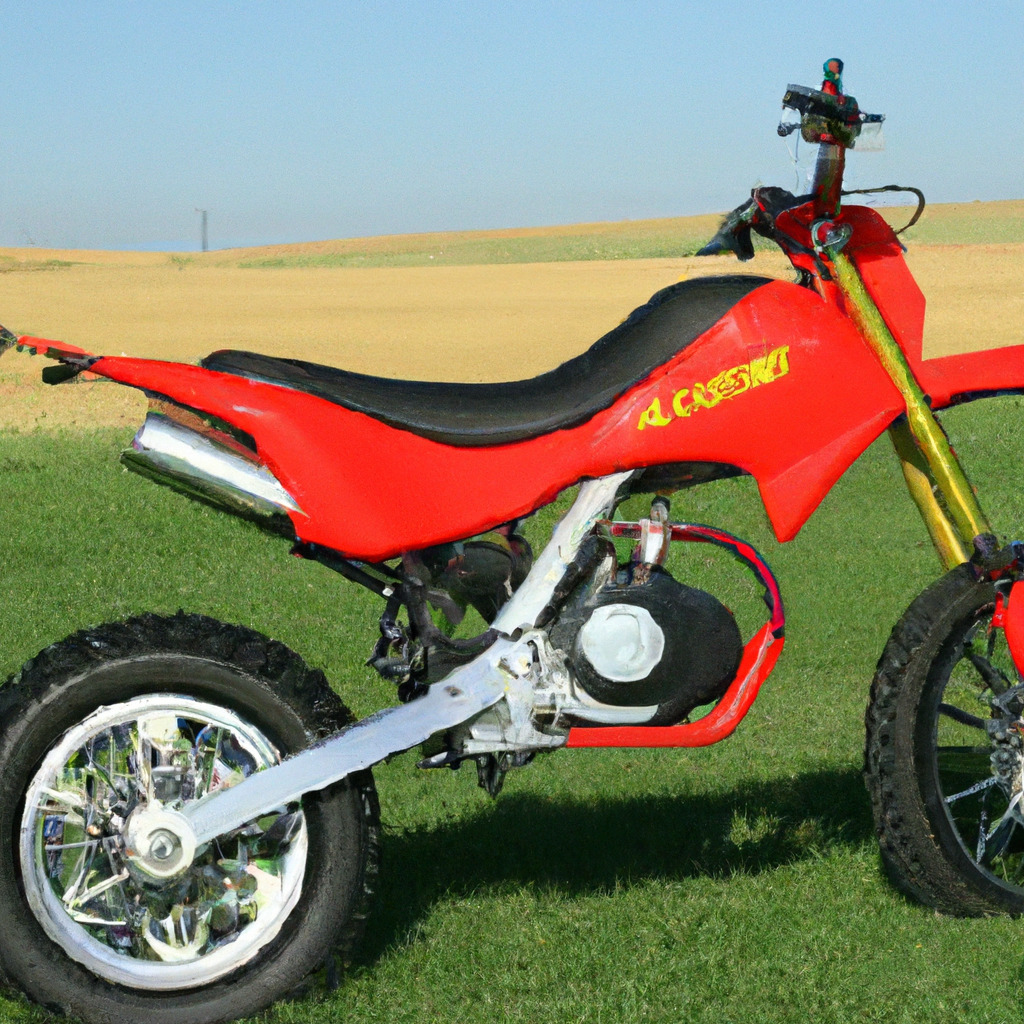
Terrain and Off-Road Capabilities
One of the key differences between electric bikes and electric dirt bikes is their adaptability to different terrains and their off-road capabilities. While electric bikes are designed for urban commuting and smoother paved surfaces, electric dirt bikes excel in handling rough, off-road terrains and providing thrilling off-road experiences.
Terrain Adaptability
Electric bikes are designed for urban environments and are best suited for paved roads and smooth surfaces. They may struggle on off-road trails, loose dirt, and steep inclines due to the lack of proper off-road features and suspension. Electric dirt bikes, on the other hand, are built to tackle challenging terrains such as dirt tracks, trails, and muddy conditions. They have features like high ground clearance and robust suspension systems to handle rocks, bumps, and uneven surfaces.
Shock Absorption
Electric bikes, while equipped with suspension systems, prioritize comfort over off-road shock absorption. The suspension on urban electric bikes is often limited to front forks, aimed at reducing vibrations and providing a smoother ride on paved roads. Electric dirt bikes, however, feature advanced, adjustable suspension systems that can handle big jumps, absorb shocks from rough terrains, and provide better control and stability during off-road adventures.
Climbing and Descending
Electric bikes may struggle with steep inclines and technically challenging off-road sections due to their design and limited power. Climbing steep hills can be challenging for electric bikes, especially if they have heavy loads or encounter loose terrain. Electric dirt bikes, with their powerful motors and specialized off-road features, excel in climbing challenging inclines and tackling difficult descents with ease. They provide better traction, control, and stability, allowing riders to conquer tough off-road conditions.
Jumping and Tricks
Jumping and performing tricks are exhilarating experiences often associated with electric dirt bikes. These bikes are specifically designed to handle the demands of off-road jumps and provide riders with the necessary stability and control during mid-air maneuvers. Electric dirt bikes typically have stronger and more durable frames, advanced suspension systems, and knobby tires that enhance grip and ensure a smoother landing. Electric bikes, while not designed for jumping or tricks, can still handle small jumps and provide a fun riding experience on smoother surfaces.
Control and Handling
Control and handling characteristics are crucial factors that differentiate electric bikes and electric dirt bikes. The intended use and riding environments influence the design and engineering decisions that contribute to their respective control and handling performances.
Throttle Control
Electric bikes for urban commuting often feature pedal-assist systems that provide assistance when the rider pedals. Throttle control is minimal, with the level of assistance determined by the selected power mode. Riders can choose to pedal normally without assistance or engage higher power modes for greater assistance. Electric dirt bikes, on the other hand, are typically equipped with twist-grip throttles that allow riders to control the power output directly. This provides instant access to full motor power and allows for quick acceleration and control during off-road riding.
Braking System
The braking systems on electric bikes and electric dirt bikes differ to match their riding scenarios. Electric bikes for urban commuting commonly employ standard bicycle braking systems, such as rim brakes or disc brakes. These brakes provide sufficient stopping power and are designed for smoother roads and lower speeds. Electric dirt bikes, with their higher speeds and off-road ventures, require more robust braking systems. They are equipped with hydraulic disc brakes or advanced off-road braking systems that can handle the demands of challenging terrains and sudden stops.
Suspension Adjustment
Electric bikes for urban commuting often have limited suspension adjustment options, with preset suspension settings that aim to provide comfort and stability on smooth roads. Riders may have the ability to adjust the suspension preload, allowing them to fine-tune the comfort level based on their weight and riding style. Electric dirt bikes, on the other hand, feature adjustable suspension systems that allow riders to customize the suspension settings according to the terrain and riding preferences. This enables riders to adapt to different off-road conditions and optimize their suspension for maximum control and performance.
Maneuverability
Due to their lightweight frames and compact designs, electric bikes for urban commuting generally have excellent maneuverability, allowing riders to navigate through city traffic or tight spaces with ease. They are agile and responsive, enabling quick turns and efficient weaving in and out of congested areas. Electric dirt bikes, while typically heavier and larger, offer excellent maneuverability in off-road environments. Their specialized off-road features, such as high ground clearance and responsive steering, allow riders to navigate through tight trails, sharp corners, and obstacles with precision.
Stability and Balance
Electric bikes for urban commuting prioritize stability and balance on smooth, even surfaces. Their designs focus on providing a stable and comfortable riding experience, with features like wider tires and lower center of gravity contributing to enhanced stability. Electric dirt bikes, designed to handle rough terrains and challenging off-road conditions, provide stability through features such as wider handlebars, robust frames, and lower-weight distribution towards the front. These design elements ensure riders can maintain balance and control even in demanding off-road situations, where maintaining stability is crucial.
Safety Features
Safety is of utmost importance when considering electric bikes and electric dirt bikes. Both types of bikes have specific safety features that aim to protect riders and ensure a safe riding experience.
Protective Gear
When riding electric bikes and electric dirt bikes, it is essential to wear appropriate protective gear to minimize the risk of injury. Helmets are a must, providing head protection in the event of a crash or fall. Additionally, riders should consider wearing protective clothing, including gloves, knee and elbow pads, and sturdy footwear. This gear helps protect against potential impact and abrasion injuries during both on-road and off-road riding.
Headlights and Taillights
Electric bikes intended for urban commuting often feature integrated headlights and taillights to increase visibility and ensure riders can be seen by other road users, especially in low-light conditions or during nighttime riding. Electric dirt bikes generally do not have integrated headlights and taillights, as they are primarily designed for off-road use and are less likely to encounter road traffic. However, riders may choose to equip their electric dirt bikes with aftermarket lights if they plan to ride on public roads or in low-light conditions.
Horn and Bell
While electric bikes for urban commuting often feature bells or horns to alert pedestrians and other road users, electric dirt bikes generally do not have these features. In off-road settings, the need for such alerts is minimal, as riders typically have exclusive use of the terrain and encounter fewer pedestrians. However, responsible riding and adherence to proper trail etiquette are important for maintaining safety and avoiding accidents when riding electric dirt bikes on shared trails.
Safety Switches
Electric bikes and electric dirt bikes are equipped with safety switches to ensure the rider’s safety and prevent unauthorized use. These switches are typically built into the battery or motor system and require a key or specific action to activate or deactivate the electric power. Safety switches help prevent accidental activation of the motor, restrict access to the battery, and ensure that the bike can only be operated by authorized individuals.
Legal Requirements and Regulations
Before operating an electric bike or electric dirt bike, riders must familiarize themselves with the legal requirements and regulations governing their use in their jurisdiction. Compliance with these laws is essential to ensure the safety of the rider and others, as well as to avoid penalties or legal issues.
Licensing and Age Restrictions
In many jurisdictions, electric bikes fall under the same classification as regular bicycles, and riders do not require a driver’s license to operate them. However, specific age restrictions may apply, particularly when it comes to electric bikes with higher motor power. Riders are advised to check local laws and regulations to determine any age restrictions or licensing requirements specific to their area.
Electric dirt bikes, on the other hand, may require a license or permit to operate, depending on the jurisdiction. The age restrictions for electric dirt bikes are typically higher, and riders may need to obtain a specific off-road motorcycle license or endorsement. This ensures that riders have the necessary skills and knowledge to safely operate electric dirt bikes in off-road environments.
Registration and Insurance
The registration and insurance requirements for electric bikes and electric dirt bikes vary depending on the jurisdiction. In some areas, electric bikes do not require registration or insurance, as they are treated similarly to regular bicycles. However, riders should consult local regulations to confirm whether registration or insurance is required in their specific location.
Electric dirt bikes, especially those intended for off-road use only, may not require registration or insurance in some jurisdictions. However, if electric dirt bikes are permitted on public roads or require licensing, registration, and insurance for operation, riders must comply with these requirements to legally ride them.
Restrictions on Usage
Specific usage restrictions may be in place for electric bikes or electric dirt bikes, depending on the jurisdiction. These restrictions may include speed limits, restrictions on where the bikes can be ridden, and whether riding is permitted on public roads or limited to designated off-road trails.
It is essential for riders to understand and adhere to these usage restrictions to avoid fines, legal consequences, or endangering themselves or others. Local authorities or relevant governing bodies can provide specific information on the usage restrictions applicable to electric bikes and electric dirt bikes in a particular area.
Noise Regulations
Noise regulations may apply to the operation of electric bikes and electric dirt bikes, particularly in densely populated areas or during specific times of the day. Electric bikes, with their whisper-quiet motors, are usually compliant with noise regulations and do not pose significant noise pollution concerns.
Electric dirt bikes, while generally quieter than traditional petrol-powered dirt bikes, may still need to adhere to specific noise restrictions, as excessive noise can disturb wildlife, nearby residents, and other trail users. Riders should be aware of and comply with noise regulations to ensure a positive relationship with the community and maintain access to riding areas.
Environmental Impact
One of the key advantages of electric bikes and electric dirt bikes is their reduced environmental impact compared to traditional petrol-powered bikes. Their electric powertrains offer significant benefits in terms of noise pollution, emissions, and sustainability.
Comparison to Regular Dirt Bikes
Electric dirt bikes have a significantly lower environmental impact compared to traditional petrol-powered dirt bikes. Petrol-powered dirt bikes produce noise pollution, emit greenhouse gases, and require the consumption of fossil fuels. Electric dirt bikes, in contrast, operate silently, produce zero emissions during use, and can be powered by renewable energy sources if available. This makes electric dirt bikes a cleaner and more sustainable alternative.
Reduced Noise Pollution
Electric bikes, due to their electric powertrains, operate quietly and produce minimal noise. This significantly reduces noise pollution compared to petrol-powered bikes, making them more suitable for urban environments and ensuring a more pleasant riding experience for the rider and the surrounding community. Reduced noise pollution also benefits wildlife and contributes to a quieter and more peaceful environment.
Zero Emissions
Electric bikes and electric dirt bikes produce zero tailpipe emissions, making them environmentally friendly alternatives to traditional vehicles. This contributes to reducing air pollution and improving air quality, particularly in urban areas. The absence of emissions from electric bikes and electric dirt bikes also eliminates the release of harmful pollutants into the atmosphere, promoting healthier living conditions and a cleaner environment.
Sustainable Transportation
By promoting the use of electric bikes and electric dirt bikes, individuals can actively contribute to sustainable transportation. Electric bikes and electric dirt bikes offer a greener and more environmentally friendly mode of transportation compared to traditional petrol-powered bikes. By choosing electric options, riders reduce their carbon footprint, minimize reliance on fossil fuels, and work towards creating a more sustainable future.
Cost Considerations
When comparing the cost of electric bikes and electric dirt bikes, several factors come into play. These include the initial price, maintenance costs, fuel and charging costs, and potential resale value.
Initial Price
The initial price of electric bikes and electric dirt bikes can vary significantly depending on the brand, model, features, and specifications. Electric bikes designed for urban commuting can range from a few hundred to several thousand dollars, with higher-end models offering more advanced features and technologies.
Electric dirt bikes, due to their specialized off-road capabilities and components, tend to have higher initial prices compared to electric bikes. Electric dirt bikes can range from a few thousand to several thousand dollars, with the price often reflecting the performance and quality of the bike.
Maintenance
Electric bikes and electric dirt bikes generally require less maintenance compared to traditional petrol-powered bikes. Electric bikes have fewer moving parts and do not require frequent oil changes or spark plug replacements. Routine maintenance for electric bikes typically involves checking and adjusting brakes, ensuring proper tire pressure, and periodically cleaning the bike.
Electric dirt bikes require maintenance similar to regular dirt bikes, such as regular oil changes, air filter cleaning or replacement, and chain adjustments. Additionally, riders should check the battery performance, suspension, and other components specific to electric dirt bikes. Regular maintenance helps ensure optimal performance, prolongs the lifespan of the bike, and promotes safe riding.
Fuel and Charging Costs
The running costs of electric bikes and electric dirt bikes are significantly lower compared to traditional petrol-powered bikes. Electric bikes require minimal energy to operate, and charging the battery is generally cheaper than using fossil fuels. The cost of charging an electric bike depends on the local electricity rates, but it typically amounts to a fraction of the cost of the fuel needed for a petrol-powered bike.
Electric dirt bikes similarly have lower running costs compared to petrol-powered dirt bikes. While the cost of electricity for charging the battery should be considered, it is usually more economical than the cost of regular refueling required by petrol-powered dirt bikes.
Resale Value
The resale value of electric bikes and electric dirt bikes varies depending on various factors, including the brand, model, age, condition, and overall market demand. Higher-end electric bikes or electric dirt bikes with reputable brands tend to retain their value better compared to lower-end or less popular models. Well-maintained bikes, with documented service history and low mileage, generally command higher resale prices.
As electric bikes and electric dirt bikes gain more popularity and technology improves, the resale market for these bikes is expected to grow. This can offer riders the opportunity to recoup a significant portion of their initial investment when it is time to upgrade or sell their bike.
In conclusion, electric bikes and electric dirt bikes differ in design, power and performance, off-road capabilities, control and handling, safety features, legal requirements, environmental impact, and cost considerations. Each type of bike offers unique advantages and caters to different riding preferences and needs. By understanding these differences, riders can make informed decisions and choose the most suitable electric bike or electric dirt bike for their riding style and desired experiences. Whether it’s smooth urban commuting or exhilarating off-road adventures, the world of electric bikes has something to offer for everyone.


